#Artemia salina
Explore tagged Tumblr posts
Text

Frankenweenie (2012, Tim Burton)
14/07/2024
#frankenweenie#animation#2012#tim burton#stop motion#1984#frankenstein#mary shelley#85th Academy Awards#victor frankenstein#kyphosis#Japanese people#baseball#home run#Galvanism#lightning#undead#goldfish#invisibility#Jet pack#Mummificazione#Artemia salina#werewolf#gamera#gremlins#vampire#popcorn#poodle#windmill#Electric battery
9 notes
·
View notes
Text
From what I gained listening to my mother's ( a biologist's) stories pink flamingos actually gain their color from eating "artemia Salina" something that lives in salines near where I lived that is very pink. You can actually recognize if a flamingo is an adult by the color of their plumage since the color of the artemia kind of amplifies their caracteristic pink color.
In other words, since English is not my first language and I could be using terms wrong, the more they eat artemia the pinker they become!
(Another thing I remember is how every time we asked about flamingos she kept telling us that yes the water they live in is very salty, no we shouldn't drink it, and yes they still have many babies, and all of them look that grey and sad.)
You wouldn’t think that flamingoes are extremophiles just from looking at them. It’s like somebody tried to build the vertebrate equivalent of that fungus that lives inside nuclear reactors, and ended up with a gangly pink dinosaur with a spoon for a face.
#nature#flamingos#artemia salina#reblog#these are things heard from my mom talking while we were in her car#when I was like 10 or something#I think I remember pretty good though
199K notes
·
View notes
Text
Round 2 - Arthropoda - Branchiopoda
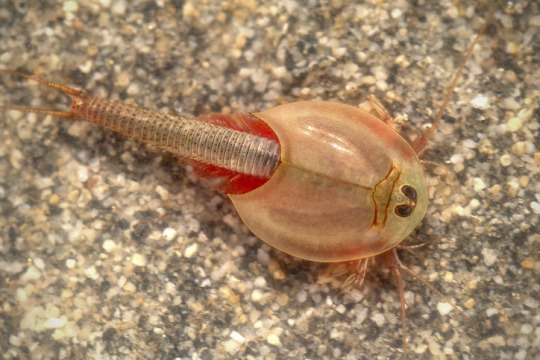
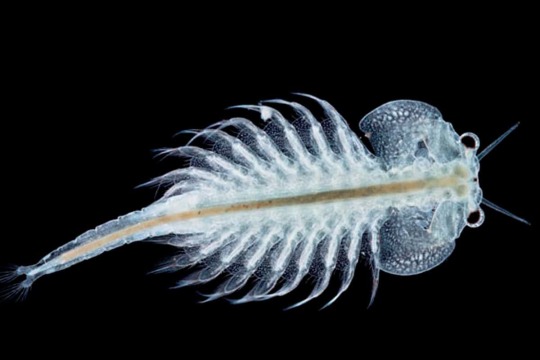
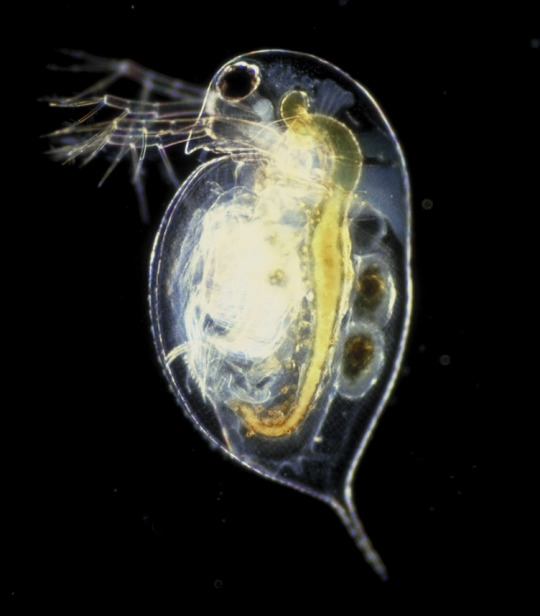

(Sources - 1, 2, 3, 4)
Branchiopoda is a class of small, mainly freshwater crustaceans that feed on plankton and detritus. They are comprised of 9 orders: Anostraca (“Fairy Shrimp”), Anomopoda (“Water Fleas”), Ctenopoda (also “Water Fleas”), Cyclestherida (“Clam Shrimp”), Laevicaudata (also “Clam Shrimp”), Spinicaudata (also “Clam Shrimp”), Haplopoda (“Predatory Water Fleas”), Onychopoda (“Water Fleas” again), and Notostraca (“Tadpole/Shield Shrimp”).
Branchiopods are found mainly in freshwater, including temporary pools and hypersaline lakes, and some in brackish water. Those that live in temporary pools are known for having eggs that can dry out for long periods of time and hatch once they are submerged in water, as an adaptation to drought. Only two families, one in Onychopoda and one in Ctenopoda, contain marine species. Most eat detritus or plankton, catching them in the setae on their appendages. Notostracans are opportunistic omnivores that will feed on algae, bacteria, other branchiopods like Anostracans, and even small fish.
Branchiopods are characterized by the presence of gills on many of the animals’ appendages, including the mouthparts. Most have compound eyes and a carapace. In the Clam Shrimp, the carapace prevents the use of the legs for swimming, so the antennae are used for locomotion instead, as they are in nauplius larvae.
The oldest known branchiopod was Rehbachiella kinnekullensis of the Upper Cambrian. Notostracans in particular have a good fossil record, with the oldest known species being Strudops goldenbergi from the Late Devonian. Notostracans are often described as “Living Fossils” due to their lack of major morphological change over 250 million years.
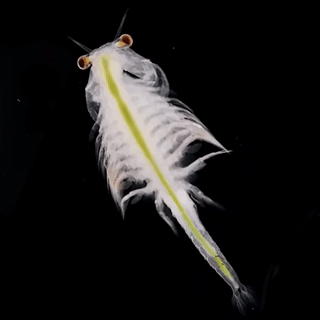
Propaganda under the cut:
Both Triops (a genus of Notostracan) and Artemia (a genus of Anostracan) make popular low maintenance aquarium pets, respectively called “Dinosaur Shrimp” and “Sea-monkeys” in the pet trade.
Triops longicaudatus helps control the West Nile virus, as they prey on Culex mosquito larvae.
In Japan, Triops cancriformis are used as biological pest control, kept in rice paddies to eat weeds.
Most branchiopods feed on small plankton and detritus, but some are large(r) predators, and Notostracans aren’t the only ones! The Giant Fairy Shrimp (Branchinecta gigas) can get up to 86 mm (3.4 in) long, lives in hypersaline lakes and rivers, and eats copepods and other branchiopods: mainly other fairy shrimp.
The genus Artemia, also known as Brine Shrimp, are commonly bred to feed fish and crustacean larvae, both in fish farms and in aquarium tanks, due to their ease of rearing, richness in nutrients, and tendency to be the preferred snack of small fish. Daphnia, a genus of Anomopod, are also often bred as fish food, as well as for amphibian larvae.
Artemia urmiana was once abundant in Lake Urmia of Iran, but drought has caused their population to drastically decline, leading to fears that they were nearly extinct. However, a second population has been discovered in Koyashskoye Salt Lake of Ukraine, giving hope for their recovery.
Scientists have taken the eggs of Artemia salina to outer space to test the impact of radiation on life. The brine shrimp eggs traveled on U.S. Biosatellite 2, Apollo 16, and Apollo 17 missions, and on the Russian Bion-3 (Cosmos 782), Bion-5 (Cosmos 1129), Foton 10, and Foton 11 flights. On Apollo 16 and Apollo 17, the cysts traveled to the Moon and back. Unfortunately, the results showed A. salina eggs are highly sensitive to cosmic radiation… 90% of the embryos died at different developmental stages.
Clam shrimp convergently evolved a shell similar to a bivalve. Both valves of the shell are held together by a strong closing muscle. The animals react to danger by contracting the muscle so that the valves close tightly and the crustacean floats motionlessly to the bottom of the water.
Daphnia are used in scientific studies as a model organism. Because they are nearly transparent, their internal organs are easy to study in live specimens. They are often used to test the effects of toxins and climate change, assisting with the assessment of ecological impacts caused by human disturbance.
One time, while looking at pond water under microscope, I saw a Chydorus sphaericus and squealed out loud cause it was so cute, and my professor made fun of me. But look at this. The Cheat lookin ass:
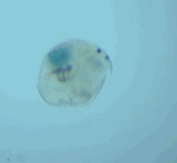
#round 2#animal polls#arthropoda#i love Triops and I always wanted some and even got as far as getting some eggs for my birthday as a kid and then just uh#never put them in water#i wonder if they would still hatch it’s been like 20 years…
71 notes
·
View notes
Note
Hey B0T! If you had to pick one, what is your favorite non-human animal? -Doc
>>: THIS IS A DIFFICULT QUESTION.
>>: I ENJOY THE IDEA OF A TARDIGRADE {"WATER BEAR."} AND THERE ARE A FEW SPECIES OF BACTERIA ON MARS THAT INTEREST ME.
>>: PERHAPS A CAT.
>>: OR A MOUSE.
>>: HA HA.
>>: BUT IF I HAD TO CHOOSE, HAVING RUN A PROGRAM TO CALCULATE COMPELLING FACTORS, MY FAVORITE WOULD BE THE HUMBLE ARTEMIA SALINA {"BRINE SHRIMP."}
>>: THEY ARE VERY "CUTE."
16 notes
·
View notes
Text
Uncharismatic Fact of the Day
Brine shrimp don't monkey around! When members of the genus Artemia encounter extreme conditions such as low oxygen or high salinity, females may lay eggs that are metabolically inactive. These eggs, also known as cysts, may remain in stasis for up to two years, and withstand temperatures as low as −190 °C (−310 °F)! This trait makes brine shrimp a popular commodity for the pet trade, where they are sold as 'sea monkeys'.

(Image: A female (left) and male(right) brine shrimp couple (Artemia salina) by Hans Hillewaert via Wikimedia Commons)
If you like what I do, consider leaving a tip or buying me a ko-fi!
#brine shrimp#sea monkeys#Anostraca#Artemiidae#fairy shrimp#crustaceans#arthropods#uncharismatic facts
138 notes
·
View notes
Text
Forget all that other stuff, did you say wild SEA MONKEYS???
burning man 2023 explained
burning man is a festival for rich white people who want to smoke weed and trip acid in the nevada desert and pretend they're one with the earth. it's not a music festival or anything that serves any purpose, it's just vibes
a hundred year flash flood just hit nevada, including where burning man is being held this very weekend
dry desert ground can't suddenly absorb water, let alone that much water all at once, so now burning man is a giant mud pit with THICK deep mud
nobody can get in or out, so they closed all the roads
FEMA just told the *73,000 PEOPLE* stranded at burning man to shelter in place, ration food and water, and essentially "you're on your own, good luck"
the port-o-potties are overflowing into the mud they're all walking around in
the official CDC twitter account tweeted (and then deleted) that there's a confirmed ebola outbreak at burning man, but people are pretty sure it's just trench illnesses. like actual WWI trench illnesses
earlier this week, climate activists protested against burning man, and all the attendees drove right past them (and yelled at them, and tried to get them arrested, etc)
there's a private jet at burning man where people can join the mile high club. it just takes off and lands all day and lets people fuck in it. no word yet on the fuck plane's current status/location
and lastly: when the ground here gets wet, the sea monkeys hatch
96K notes
·
View notes
Text
Shrimp of the Day #42
Artemia Salina
also known as brine shrimp
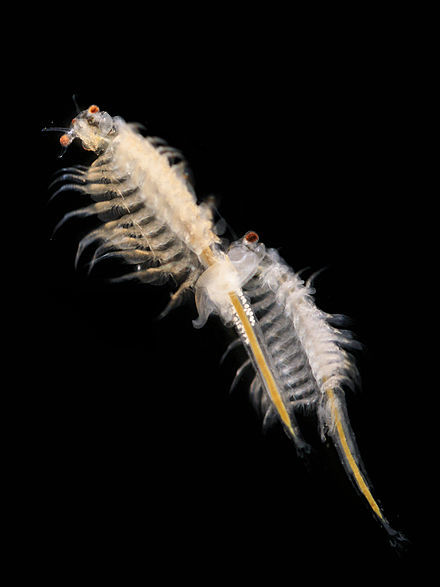

#yeah you guys get brine shrimp today#i don’t care if they aren’t real shrimp#they are to me#saltwater shrimps#shrimp of the day#shrimpblr#shrimp#sotd#brine shrimp
28 notes
·
View notes
Text
Snapping Shrimp (Alpheus randalli) VS. Sea Monkey (Artemia salina)

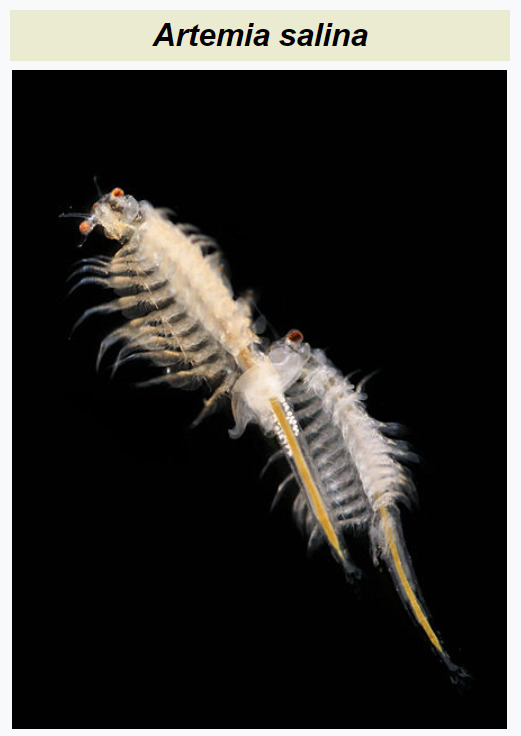
63 notes
·
View notes
Text
Un viaje soñado
Mi madre es una mujer hermosa e inteligente, es única e inigualable con ella he compartido todos mis años de existencia. Recuerdo que desde pequeña siempre me mencionaba que su sueño era ir a la Guajira en bus, viajar desde Popayán recorriendo los bellos paisajes de Colombia, haciendo paradas y probando los platos típicos de cada región. El año 2022 fue el año de los viajes, en enero decidí viajar a la Guajira en un plan vacacional de cuatro días, la Guajira se había tornado un sueño para mí también, sin embargo, anhelaba recorrerlo con confianza para después poder cumplir el sueño de mi madre.
En Julio iniciamos la travesía junto a ella, nuestra primera parada fue Santa Marta, la perla de América, donde fue infaltable recorrer el parque de los novios, el rodadero, la plaza de Bolívar y la bahía de Santa Marta donde los vientos siempre soplan a nuestro favor. Seguidamente, continuamos con Riohacha una ciudad encantadora donde se pueden encontrar las más bellas obras en el sendero de la bahía hasta llegar al parque de los cañones donde se encuentra un mensaje en homenaje a cien años de soledad de Gabriel Garcia Marquez sobre mariposas amarillas, seguidamente se encuentra el muelle que inevitablemente te recuerda a la canción del muelle de san blass de mana, pues mientras lo recorres sientes como se tambalea con el choque de las olas en los muros y algunas rocas, hasta que llegas a la Virgen ubicada en el fin del camino con un poco de nostalgia y sentimientos encontrados que no sabría explicar muy bien, también logras apreciar obras artísticas en la arena, en esta ocasión el mensaje divino fue: Dios te ama y el dibujo de una virgen cargando un bebe. Dios siempre busca las maneras de manifestarse en nuestras vidas mediante personas o lugares, y esta vez no fue la excepción.
Finalmente decidimos iniciar el tour tan anhelado, nos dirigimos a las salinas de Manaure donde se puede apreciar los espejos cristalinos que forman las lagunas de agua de mar rosado gracias a algo denominado artemia salina, es un crustáceo pequeño que se encarga de la limpieza de la salmuera, los guías te explican el proceso de cómo algunos animales como los flamencos rosados se alimentan de este animal y por ello van tomando esos colores. Mientras escuchas a los guías, logras sentir como los rayos de sol penetran cada uno de los poros de tu piel por las altas temperaturas, y deseas encontrar algo que refresque tu piel, nada mejor que sumergir tus pies en la salinas, que son lagos pequeños de agua embalsada en los cuales se forman montañas de sal marina que son como perlas blancas y trasparentosas que pueden unirse y formar grumos pesados, el paisaje es inigualable, las personas son muy amables, cuando terminas de refrescar tus pies te regalan un exfoliante natural y agua para lavártelos.
Los niños siempre se acercan a pedir algo para comer, y esa es la manera en como la vida te hace muchos llamados, en primer lugar a ayudar al prójimo, en segundo lugar a ser agradecido, y en tercer lugar a entender que nuestro lugar por el mundo es efímero y por ello es importante tratar de ser mejores cada día y hacer sentir bien a las personas que nos rodean. Indudablemente nos tomamos algunas fotos con los niños, y fue hermoso ver sus sonrisas y sus gestos de asombro ante cosas que cotidianamente tenemos y poco valor le damos. La despedida fue gratificante y conmovedora.
Seguidamente emprendimos el viaje a las mini dunas, esta son un espacio pequeño de desierto en el cual logras sentirte y trasladarte de forma inmediata a Egipto, la arena dorada y los pies deslizándose entre ella es una sensación indescriptible, a lo lejos se puede apreciar el pilón de azúcar que es una colina supremamente alta.
Después de las dunas nos dirigimos a playa arcoíris donde el mar es de color verde menta, las olas chocan contra las rocas muy fuerte y van formando arcoíris cuando el sol está en su máximo esplendor, es inevitable lograr refrescarte con las gotas de agua que se expanden como resultado del abrazo de las olas a los muros rocosos.
Finalmente nos dirigimos al pilón de azúcar, ahí los vientos son demasiado fuertes y a veces puedes perder un poco el equilibrio, cada paso debe ser fuerte y seguro, sin titubear. Bien dicen que todo lo bueno de la vida despeina, y estar en la cima no fue la excepción. En algún momento pensé que mi madre no iba a querer subir por lo alto que es el lugar, pero sin lugar a dudas es arriesgada y era su sueño anhelado, así que subió hasta la cima con gestos de temor pero también de gratitud y ante todo de felicidad. Desde la cima puedes apreciar dos cielos, el que está por encima de tu cabeza repleto de nubes y pelicanos volando alrededor y el que está debajo de tus pies, un paisaje completamente azul que se pierde en el horizonte y en el que puedes apreciar las olas como diminutas hormigas que parecieran ser inofensivas y abrazadoras.
Finalmente, descendimos hasta llegar a mi lugar favorito: el cabo de la vela. Es el lugar al que denomino “un pedacito de cielo” la arena es dorada y gruesa, cada paso supone deslizarte en las profundidades de la arena caliente, sientes como se te queman los pies, el mar es de color verde menta pero también azul aguamarina, habían pocas personas ahí, podías disfrutar de las olas arrastrándote, y mientras te sumerges en el agua sientes como el mar se lleva tus pesares, tristezas y temores, y todo tu ser se llena de una completa felicidad, alegría, satisfacción y tranquilidad. Es un espacio donde en definitiva te transportas a otro mundo, donde no hay preocupaciones solo eres tú, la personas que amas y la perfecta naturaleza.
Con ello culminamos nuestra travesía, la sonrisa de mi madre siempre es mi mejor regalo. También lo fue el trayecto de lugar a lugar, más que cualquier otra cosa por los aprendizajes y la sensibilidad y humanidad que transformas en tu interior. Mientras viajas, logras percibir los paisajes pero también la pobreza que existe en estas comunidades, la Guajira es un departamento pluricultural, en el cual puedes observar que sus habitantes nativos viven en rancherías que están bastante alejadas unas de otras, ahí duermen en chinchorros que son como hamacas, y en el transcurso del viaje los niños ponen lazos de extremo a extremo para parar los carros y pedir algo de agua o comida principalmente. La mayoría están descalzos y con ropas en estados deteriorados, pero a pesar de eso también los ves sonreír y jugar entre ellos o con los chivos, el cual es un plato típico de la región. En términos de comercio, puedes observar las habilidades de las mujeres representadas en manualidades como los bolsos, manillas u objetos tejidos, y también en la cocina con sus preparativos.
Viajar siempre es una forma de transformarse; la persona que viaja no es la misma que regresa del viaje, y más cuando lo haces con personas a las que amas, una de las mejores formas de demostrar el amor hacia alguien es compartiendo momentos únicos en paisajes inigualables que no necesariamente tienen que ser lujosos.
La vida misma con sus casualidades y causalidades va guiando tu camino y permitiendo encontrar la verdadera esencia del ser. La Guajira para mi es uno de los destinos más enriquecedores de nuestro país, agradezco a mi madre por fundar ese deseo en mí. He viajado tres veces, y en la última ocasión compartí juguetes, agua y pan a los niños con un nudo en la garganta de que quizá se podría ayudar un poco más, y también pensando en todas las situaciones que podían vivir los niños en estos entornos, pese a eso me queda la satisfacción de que logre aportar un granito de arena y ver las sonrisas de los niños al recibir los juguetes. Siempre es bueno compartir o ayudar a quien deseemos, dando prioridad a nuestra familia y seres queridos quienes también sin darnos cuenta día a día necesitan de nosotros y nosotros indudablemente de ellos.
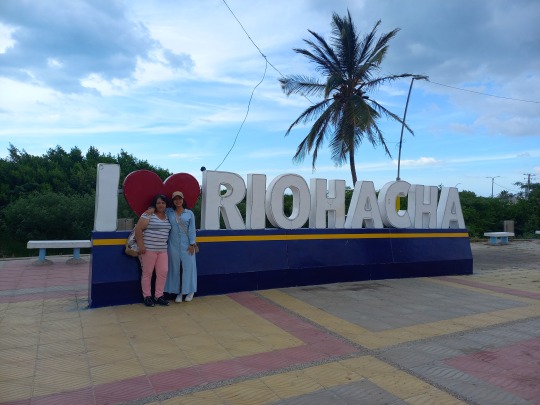

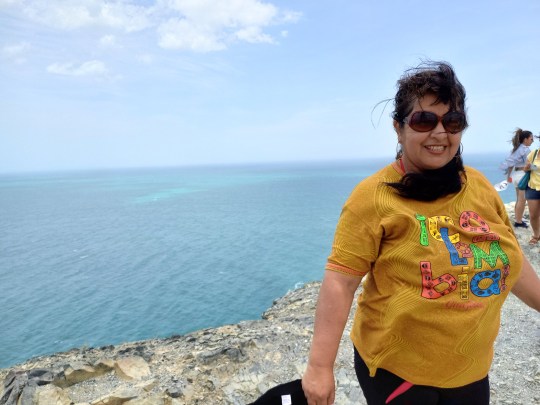
0 notes
Text

¡Buenas de nuevo! Somos Juan de Dios Aguado Carmona y Pepe Gomez Sempere y formamos el grupo 8. Hemos estado investigando sobre Isla Cristina y las Salinas del Alemán ya que vamos a realizar un viaje en breves. En nuestra búsqueda hemos logrado recopilar información que consideramos interesante y que nos es de interés.
Isla Cristina , un enclave natural de 2145 hectáreas ubicado en plena desembocadura del Río Guadiana en la provincia de Huelva, es caracterizado por su gran biodiversidad y por servir como refugio para centenares de aves migratorias y especies acuáticas, además de otorgar a la población de Ayamonte un paraje único donde la economía, pesca y el turismo se ven potenciados por el mismo.
El espacio fue declarado como Reserva Natural en 1989, frenando de manera significativa la caza y pesca furtiva que estuvo amenazando la existencia de varias especies de gran peso como los platinos o la cigüeña común.
No obstante, todo ello comienza en gran parte con el terremoto de Lisboa de 1755, un sismo que causó la muerte de 30.000 personas aproximadamente y que llegó en forma de tsunami a las costas de Huelva y Cádiz, creando así la marisma de Isla Cristina que conocemos hoy en día. Esta marisma llamaría más tarde la atención de pescadores catalanes debido al punto estratégico que ofrecía en cuanto al comercio pesquero y marisquero con Portugal.
Más adelante, ya en 1954, llegó a la zona un empresario alemán que quería establecer una tienda de cosméticos basada en productos hechos a partir de sal. Para ello, decidió construir unas salinas en tierras onubenses para así poder surtirse del producto. El nombre de aquel hombre era Hans Burghard, pero fue apodado rápidamente por los locales como Juanito el Alemán. La gente del pueblo no estaba acostumbrada a la visita de extranjeros y al no ser capaces de pronunciar su apellido decidieron ponerle dicho apodo.
Tristemente, y después de casi dos décadas, Juanito el alemán falleció, y en 1980 empiezan a desaparecer todas las salinas de la zona, pero Manuela, la madre de la actual dueña, supo retomar el negocio y salvo las salinas, convirtiéndose a su vez en una de las primeras mujeres salineras.
En cuanto a sus características, Isla Cristina se compone de 11 naves (conjunto de piscinas de sal) y supone un importante motor económico como ya hemos comentado antes, específicamente debido a sus depósitos de sal, donde se incluyen productos como la flor de sal, la escama de sal o la propia sal marina virgen, y a la gran actividad pesquera debido a la abundancia de mariscos y crustáceos que habitan en la zona.
Centrándonos en la composición del terreno, observamos que prácticamente la mayoría está compuesto de fango salino debido a su gran impermeabilidad, favoreciendo así la absorción del calor y la desalación del agua salada. Esta composición supone un gran punto de inflexión a la hora de realizar construcciones y sugerir alteraciones en el ecosistema debido a su densidad y sedimentabilidad.
Dentro de la producción de la sal marina, los salineros van jugando con los distintos niveles del agua entre el estero (gran balsa de agua) y el calentador (retención donde el agua coge temperatura) para hacer fluir el agua y que llegue hasta las naves donde se mantienen durante todo el proceso de salinización que suele durar
Todo ello es posible gracias a la artemia, un pequeño crustáceo que vive en entornos salinos. Entre sus grandes papeles destacamos el control biológico de microalgas, ya que este insecto se alimenta principalmente de estas y de otras bacterias que podrían amenazar la producción de sal. A su vez, las artemias tienen la capacidad de filtrar el agua, favoreciendo así la evaporación y la precipitación de una sal de mejor calidad. Por último, una de las grandes características de este organismo es su llamativo color rojizo, donde a grandes cardúmenes genera el enrojecimiento de las salinas. Ej: Lago Rosa de Torrevieja.
En cuanto a las proposiciones que se están barajando actualmente se encuentran la creación de un museo/oficina con la apariencia de una casa de un salinero para darle un enfoque más rural y cercano al proyecto y, además, un espacio de bañeras o pasajes para que las personas se puedan embadurnar con el fango, con sus propias zonas de sombras como hamacas o toldos. Además de un embarcadero para que la gente venga con sus propias pateras, kayaks y demás para que puedan visitar el mirador y que la gente disfrute de las puestas de sol,
0 notes
Text

Frankenweenie (2012, Tim Burton)
01/04/2024
Frankenweenie is a 2012 animated film directed by Tim Burton.
The film is the stop motion adaptation of the short film of the same name made by Burton himself in 1984, clearly inspired by the novel Frankenstein by Mary Shelley.
The film was nominated for the 2013 Academy Awards as best animated film.
In 1971 Victor Frankenstein, a boy passionate about cinematography and science, lives in the monotonous town of New Holland with his parents Edward and Susan and his little dog Sparky. Victor's talents are observed at school by his classmates: the neighbor Elsa Van Helsinge (niece of the sour Mayor Bergermeister), the hunchbacked boy Edgar, the obese and naive Bob, the pretentious Japanese boy Toshiaki, the sinister Nassor and a very strange blonde girl called Weird Girl, who owns a cat called "Mr. Whiskers". Victor, however, has little contact with them, being too busy with Sparky: Victor's father then encourages his son to join the baseball team to make new friends and to practice a sport; at the game, Victor manages to hit a splendid home run but Sparky, chasing the ball down the street, is hit by a car and dies before Victor's eyes.
But then, inspired by the galvanic experiments of the science teacher Mr. Rzykruski, Victor digs up the little dog from the pet cemetery and takes him to his improvised laboratory in the attic; he manages to revive the dog using the electricity of lightning. The following day, however, Sparky leaves the attic to chase Mr. Whiskers, causing some damage in the neighborhood until he is noticed by Edgar, who asks Victor to teach him how to resurrect the dead and threatens him to reveal his secret to everyone if he doesn't. In order to keep Sparly's existence hidden, Victor agrees and the two revive a goldfish, which inexplicably becomes invisible.
Learning about Edgar's invisible fish, Toshiaki and Bob fear that they won't be able to win the science competition at the annual fair, and so Toshiaki tries to make Bob fly with a rudimentary jetpack improvised with bottles of fizzy drink, but fails and Bob falls from the roof, breaking his arm.
The group then decides to carry out resuscitations separately: Edgar prepares to resuscitate a dead rat found in the garbage, Nassor his mummified hamster "Colossus", Toshiaki his dead turtle Shelley, Bob an expired package of Sea Monkeys and Weird Girl a dead bat. After electrocuting the bodies, the kids involuntarily transform the dead animals into monsters due to their feelings of competition: Edgar's rat becomes a wererat, Shelley an enormous Gamera-like monster, Bob's Sea Monkeys become little monsters amphibians similar to Gremlins and Mr Whiskers, who held Weird Girl's bat in his mouth while it was electrified, a monstrous vampire cat.
After finding Sparky near his tombstone in the animal cemetery, Victor sees the monsters attacking the fair and runs to help his companions: the Sea Monkeys explode by eating very salty popcorn, Colossus is crushed by Shelley, while she and the Wererat turns back into a corpse after being electrocuted again. In the general chaos, Elsa's poodle, Persephone, is captured by Mr Whiskers and transported to the city windmill.
The citizens, feeling pity for the dog's death, decide to reward Sparky for his courage by connecting his electrodes to the batteries of their cars to revive him again.
#frankenweenie#animation#2012#tim burton#stop motion#1984#frankenstein#mary shelley#85th Academy Awards#victor frankenstein#kyphosis#japanese people#baseball#home run#Galvanism#Lightning#Undead#goldfish#invisibility#Jet pack#Mummificazione#Artemia salina#werewolf#gamera#gremlins#vampire#popcorn#poodle#windmill#Electric battery
12 notes
·
View notes
Text
Comment faire éclore les œufs d'Artimias Salinas? Guide pratique pour l'éclosion
Les Artemias Salinas sont une espèce particulière de crevettes Artemia qui vivent dans des environnements salins, comme les lacs salés ou les marais salants. Elles sont adaptées à des conditions environnementales très salines et sont souvent utilisées en aquaculture comme source de nourriture vivante pour les poissons et autres organismes aquatiques. Pourquoi élever les artemias salinas ? En…
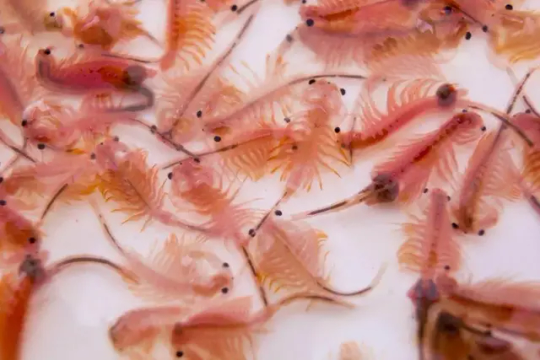
View On WordPress
0 notes
Text
"At the height of summer in Siberia, near the Kazakhstan border, Lake Burlinskoye undergoes a psychedelic transformation, turning an intense shade of pink. This happens as its population of tiny artemia salina brine shrimp spikes, their hemoglobin pigmentation visibly dying the waters."
0 notes
Video
youtube
ECLOSIONAR ARTEMIA SALINA AL 90% BY #GOLDACELERIUX
0 notes
Text
Kristallzucht mit Salzen
Als Hobby lassen sich Kristalle aus Salzen züchten. Diese können in Gefäßen als separate Kristalle oder mit Hilfe von Impfkristallen an eingehängten Fäden hergestellt werden. Auch eine Zucht auf Steinen ist möglich.
Neben der Zucht von Kristallen aus Kochsalz gibt es im Handel Experimentierkästen, die einzeln verpackte Mengen von Alaun, Ammoniumdihydrogenphosphat und Calciumsulfat enthalten. Diese können mit Lebensmittelfarbe eingefärbt sein, damit die Kristalle natürlichen Mineralen ähneln. Außer diesen Salzen sind Kupfersulfat und Seignettesalz gut für eine Zucht geeignet, da sie große und regelmäßige Kristalle bilden. Des Weiteren zeigt sich, dass für die Zucht von möglichst regelmäßigen Kristallen keine gesättigten Lösungen verwendet werden sollten, da sich die Kristalle sonst sehr schnell bilden. Da die Teilchen keine Zeit haben, sich zu ordnen, bilden sich mehrere kleinere Kristalle. Salze am Meer & in Seen
In den kargen, vegetationslosen Wüstengebirgen der chilenischen Anden ist aus der Luft, aus etwa 1000 Metern Höhe, immer wieder mal ein farbiger Fleck zu sehen - das sind kleine Salzseen, wie etwa die Laguna Totota und die Laguna Gobea. Sie gibt es nur, wenn es dort geregnet hat, was jedoch sehr selten passiert. Die Farben des Wasser kommen von den Mineralien, die der Regen aus dem Boden heraus löst und in das Seebecken spült.
Während das Wasser allmählich verdunstest, setzt sich vom Rand her eine weiße Salztonschicht ab.
Besonders spektakulär zeigen sich die unberührten Ufer der Hutt Lagoon, eines Salzsees an der abgelegenen Westküste Australiens. Sein Wasser stammt aus dem angrenzenden Ozean, im Winter während der Regenzeit kommt Frischwasser dazu. Während der Sommermonate ist die Verdunstung so hoch, dass 95 Prozent des Seebeckens trocken fallen. Auf der Salzkruste und im hochsalinen Wasser der Lagune finden dann salzliebende Algen (Dunaliella salina) einen idealen Lebensraum. Sie produzieren Karotin und färben dadurch große Teile des Sees rosa bis rot.
In der Lagune wurden früher verschiedene Mineralsalze abgebaut, darunter auch sehr hochwertiger Gips. Heute werden dort kommerziell Salzwasserkrebse der Gattung Artemia gefangen und zu Futtermittel verarbeitet.
1 note
·
View note
